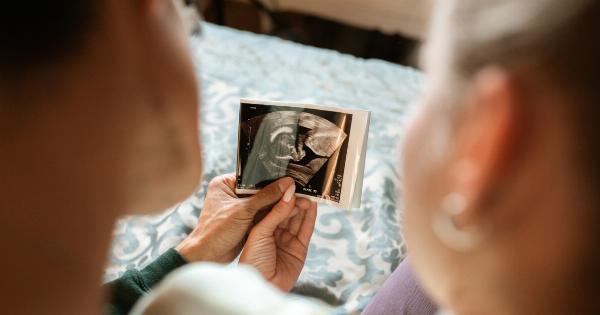Embryo transfer is a crucial step in the process of assisted reproductive technology (ART) that helps couples struggling with infertility fulfill their dream of having a child.
This procedure involves transferring embryos that have been created in the laboratory to the uterus of the intended mother or a gestational carrier.
How Does Embryo Transfer Work?
Embryo transfer typically takes place around 3-6 days after fertilization through in vitro fertilization (IVF) or intracytoplasmic sperm injection (ICSI).
The embryos are usually developed and cultured in a controlled laboratory environment until they reach the blastocyst stage, consisting of around 100-150 cells.
Before the embryo transfer procedure, the woman’s uterus is prepared for optimal implantation by carefully monitoring her hormone levels and uterine lining thickness.
This is typically done using hormonal medications to stimulate the growth of multiple follicles in the ovaries and ensure the endometrium is receptive to implantation.
When the embryos are ready for transfer, the procedure is usually performed in an outpatient setting without requiring anesthesia.
The woman lies down on an examination table, and a speculum is gently inserted into the vagina to provide access to the cervix.
The embryos, held in a small amount of culture medium, are loaded into a soft, thin tube called a catheter. This catheter is carefully guided through the cervix and into the uterus using ultrasound guidance.
The embryos are then gently placed into the uterus, and the catheter is removed.
Frozen Embryo Transfer (FET)
In certain cases, couples may choose to freeze their embryos for future use, allowing them to plan the timing of pregnancy or undergo additional testing.
Frozen embryo transfer (FET) involves thawing and transferring the frozen embryos to the uterus at a later date.
Frozen embryo transfer offers several advantages. It allows for better synchronization between the embryo and the uterine lining, as the woman’s hormone levels and endometrial thickness can be precisely controlled.
It also increases the chances of a successful pregnancy by allowing the body to recover from the IVF stimulation cycle and reducing the risk of ovarian hyperstimulation syndrome.
Factors Influencing Success
Several factors influence the success of embryo transfer, including:.
Embryo quality: The quality and viability of embryos significantly affect the chance of successful implantation.
Embryos with better morphology and fewer chromosomal abnormalities have a higher likelihood of successful implantation and resulting in a healthy pregnancy.
Age of the woman: The woman’s age plays a crucial role in the success of embryo transfer. As women age, the quality and quantity of their eggs decline, making it more challenging to achieve a successful pregnancy.
Uterine receptivity: The condition of the woman’s uterus and endometrium affects the ability of the embryo to implant and develop.
Factors like uterine abnormalities, hormonal imbalances, or prior surgeries can influence uterine receptivity.
Embryo transfer technique: The skill and experience of the reproductive specialist performing the embryo transfer also contribute to the success rates.
Proper catheter placement, gentle handling of embryos, and accurate placement within the uterus are critical factors.
Possible Risks and Side Effects
Embryo transfer is generally a safe procedure with minimal risks or side effects. However, there are a few potential risks to be aware of:.
Infection: Though rare, there is a small risk of infection associated with the embryo transfer procedure. Strict sterile techniques are followed to minimize this risk.
Multiple pregnancies: Depending on the number of embryos transferred, there is a possibility of multiple pregnancies, such as twins or triplets.
To reduce this risk and ensure the best outcome, the number of embryos transferred is usually based on the woman’s age, embryo quality, and previous IVF success.
Ectopic pregnancy: In rare cases, the embryo may implant outside the uterus, resulting in an ectopic pregnancy. This occurs most commonly in the fallopian tubes and requires immediate medical attention to prevent complications.
Discomfort: Some women may experience mild cramping or discomfort during and after the embryo transfer procedure. This is usually temporary and resolves quickly.
After the Embryo Transfer
After the embryo transfer, it is essential to take proper care to maximize the chances of successful implantation. The woman may be advised to rest for a short period and avoid vigorous physical activity for the next few days.
It is also important to adhere to any prescribed medications or hormonal supplements to support the early stages of pregnancy.
Approximately 10-14 days after the embryo transfer, a pregnancy test is conducted to determine whether implantation and pregnancy have occurred. This is an anxious period for many couples, as they eagerly await the results.
If the pregnancy test is positive, further monitoring and support will be provided to ensure a healthy pregnancy.
If the test is negative, the couple can consult with their reproductive specialist to analyze the cycle and discuss any necessary modifications for future attempts.
Conclusion
Embryo transfer is a crucial step in the ART process that brings hope to couples struggling with infertility.
By understanding the basics of embryo transfer and the factors affecting success, individuals can approach this procedure with confidence and greater knowledge.
With advancements in medical technology and the expertise of fertility specialists, the chances of achieving a successful pregnancy through embryo transfer continue to improve, offering renewed hope to couples on their journey towards parenthood.






























